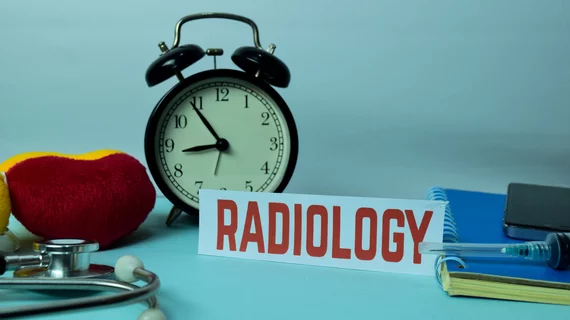Common factors associated with delays in filling outpatient MRI orders
Nearly half of outpatient MRI orders face significant delays, with several key factors influencing the likeliness of postponement, according to research published Wednesday in JACR [1].
Timely delivery of advanced imaging is a crucial component of quality care, with setbacks resulting in patient dissatisfaction and worse health outcomes. Harvard Medical School experts recently aimed to better understand the reasons healthcare consumers might experience these challenges, analyzing data from more than 126,000 MRI orders placed in their organization.
They found that nearly half of outpatient magnetic resonance imaging requests were delayed, taking 10 days more than the expected delivery date chosen by the ordering provider. Female patients and those with public insurance plans were more likely than others to witness delays, the study concluded.
“Identifying multilevel factors is the first step in developing interventions that address timeliness of MRI performance, and reduce diagnostic errors related to delayed diagnosis and subsequent treatment delays,” lead author Ronilda Lacson, MD, PhD, with the Department of Radiology at Brigham and Women’s Hospital, and colleagues wrote Jan. 10.
The study included all outpatient MRI exams ordered between October 2021 and December 2022 at the large quaternary care system. About 56% of all orders placed during this time were expected to be performed within one day (97,160 when excluding duplicates). Of those, 48% had a prolonged “order-to-performed” interval at an average of 18.5 days. Both public insurance (odds ratio=1.11) and female sex (OR=1.11) were significantly associated with delays in the execution of an MRI exam.
At the radiology practice level, cardiac imaging was tied to greater odds of delays (OR=1.71) when compared to other subspecialties. Lacson et al. also highlighted significantly higher risk of experiencing long MRI wait periods for patients from areas that are most deprived (in the highest Area Deprivation Index quintile, with OR=1.7).
The study authors offered a few suggestions to address these factors and reduce MRI wait times:
- Public insurance: “Streamlining the process for connecting patients with financial resources from the institution may address some of the concerns related to co-payments and other financial burdens faced by patients with public insurance, especially those on Medicare.”
- Female sex: “It is unclear why female patients are associated with delayed care, although domestic and childcare responsibilities have been primarily shouldered by women…Addressing the needs of women undergoing advanced imaging should be prioritized during patient scheduling and care coordination.”
- Cardiac imaging: “These examinations require cardiac imagers to be on hand during the imaging procedure, and therefore take longer to schedule. Radiology practices in cardiac imaging should consider possible ways to increase availability of MRI for patients without significantly impacting workflow. This may include hiring more radiologists or exploring the possibility of remote monitoring.”
- Higher Area Deprivation Index: “Addressing disparities in patients with higher ADI will need to include systemic approaches such as organizational team training for enhancing patient communication, access to patient navigators trained in finding local resources to assist patients, and programs addressing transportation barriers to outpatient imaging, specifically addressing multiple socioeconomic factors that contribute to nonequitable access to MRI examinations.”
Read more about the study’s results, including potential limitations, at the link below.

